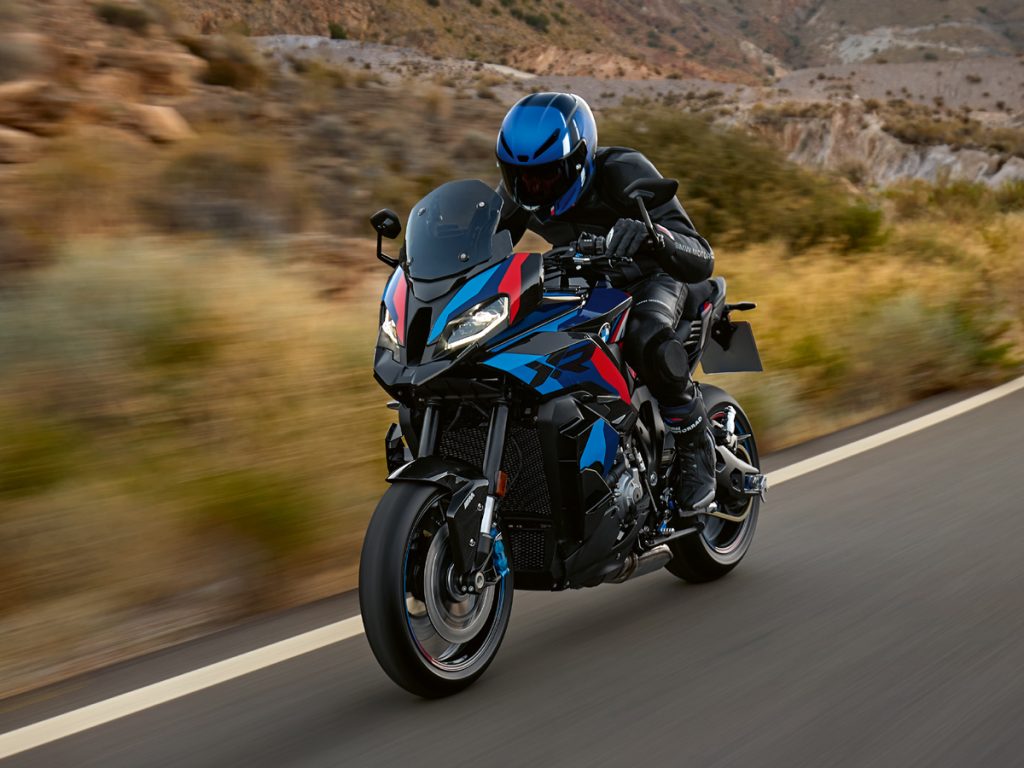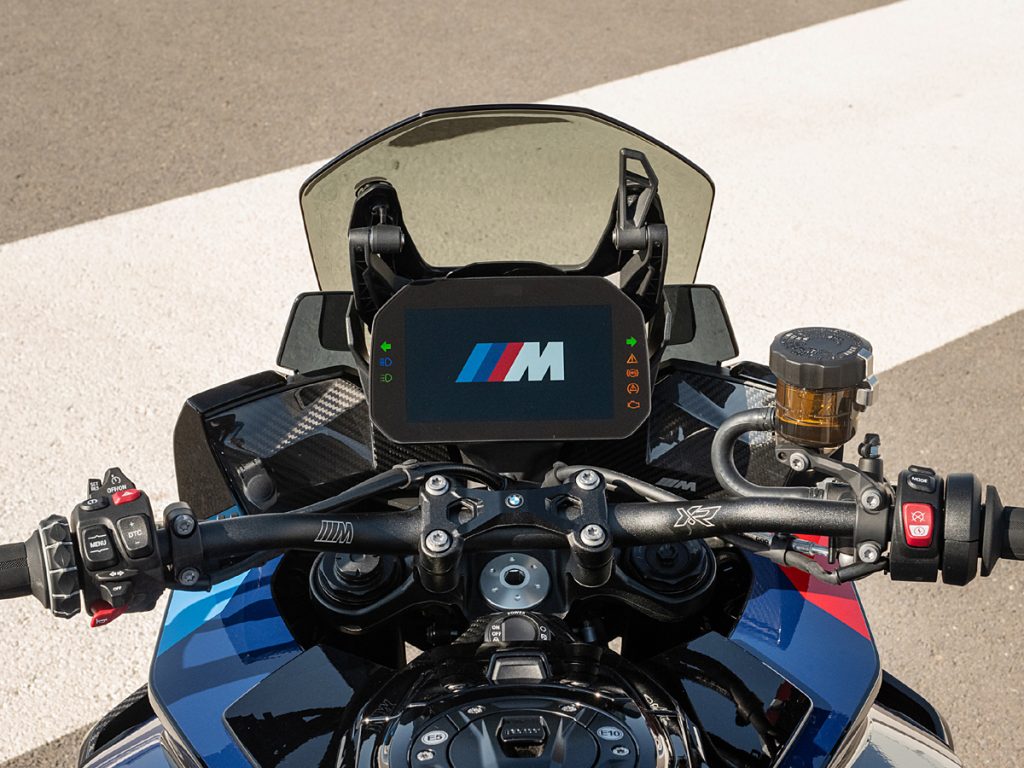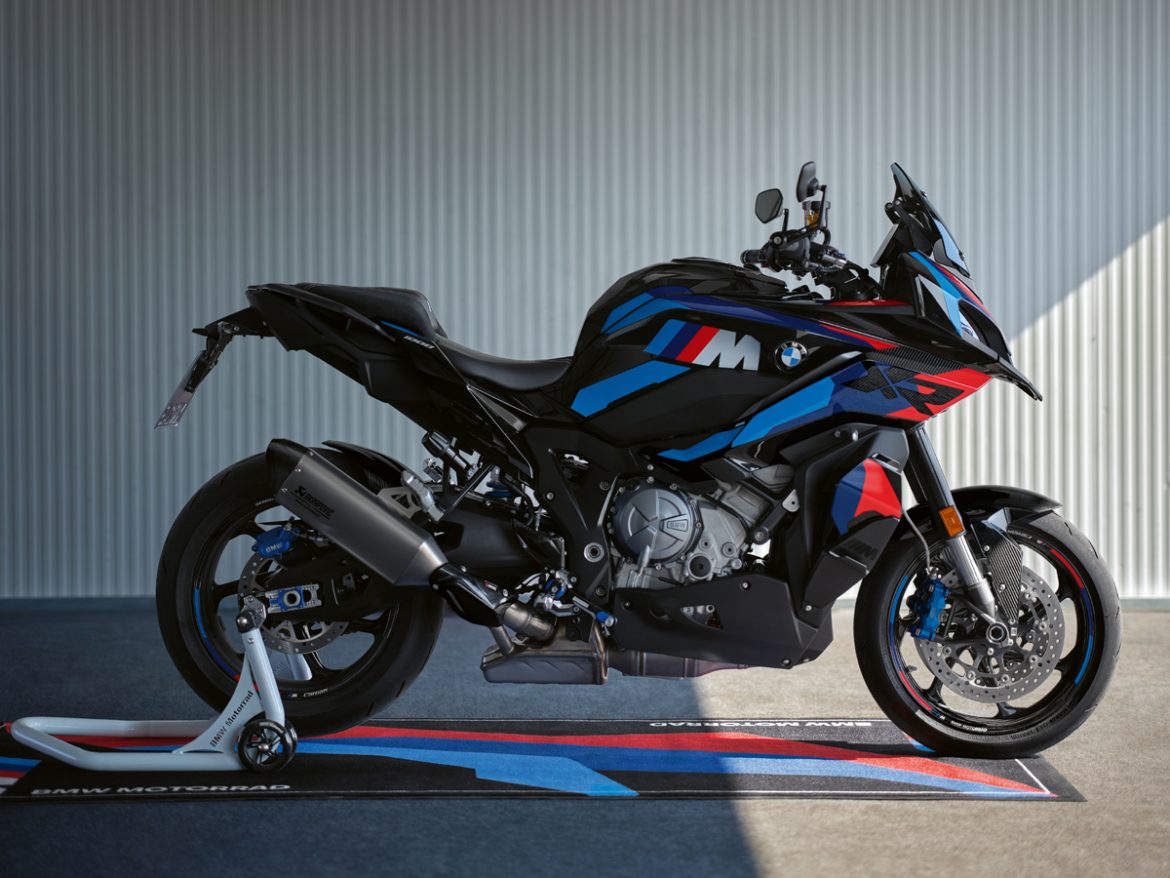The third M model from BMW Motorrad is here. Say hello to the 2024 M 1000 XR – touted as the “lightest and most powerful cross-over motorcycle in the world.” The M XR (shorthand) follows the M 1000 RR (M RR) supersport and the M 1000 R (M R) roadster, and like the other two models, the M XR is also based on its standard counterpart, the S 1000 XR. The M treatment brings with it more power, more performance, enhanced styling, extensive use of carbon fibre, and improved hardware.
Drivetrain & Performance
The M XR is powered by a liquid-cooled in-line four-cylinder engine adapted from the M RR’s shift cam engine. Peak power of 204PS comes at 12,750rpm – 31.4PS more than the 2024 S 1000 XR – and 112.5Nm of max. torque is produced at 11,000rpm. The engine revs peak at a heady 14,600rpm. For better pulling power in all gears, the M XR gets a shorter secondary gear ratio – it uses a 47-teeth sprocket instead of the S 1000 XR’s 45-teeth unit – and shorter gear ratios of the 4th, 5th and 6th gear. As a result, the M XR does the 0-100km/h run in just 3.2 seconds, with a claimed top speed of over 270km/h.

Performance optimisation on the M XR also comes in the form of redesigned air intake ducts, the use of titanium valves in the engine, a new and lighter exhaust with a compact titanium rear muffler, and the use of the BMW ShiftCam tech that helps increase torque output in the low-to-mid speed range and the increase the peak power.
Electronic Aids
To manage all that power, BMW has given the M XR an elaborate suite of electronic rider aids. It features four standard ride modes: Rain, Road, Dynamic and Race, and three additional ones: Race Pro 1, Race Pro 2 and Race Pro 3. Four adjustable throttle maps provide further power delivery customisation. The Dynamic Traction Control (DTC) works via a six-axis sensor and also offers a wheelie control function. The list also includes ABS pro, launch control, pit lane limiter, hill-start control, brake slide assist, electronic cruise control, and shift assistant pro (BMW’s term for a quickshifter) for upshifts and downshifts.
Aerodynamics & Chassis
The BMW M XR features MotoGP-style M winglets to increase downforce and improve handling. As a result, a rider can brake late into a turn and accelerate earlier with a reduced chance of popping a wheelie. The standard equipment also includes electronically-controlled Dynamic Damping Control (DDC) suspension that offers 45mm USD forks at the front and an adjustable steering damper. The M XR rides on lightweight forged aluminium wheels as standard, and customers can opt for even lighter M Carbon wheels, which are available as an optional extra in the M Competition Package. The aluminium wheels are fitted with purpose-built M Brakes, comprising twin 320mm discs at the front and a single 265mm disc at the back.
Instrumentation
The M XR gets the same instrument cluster as the M RR, a 6.5-inch TFT display with a bespoke ‘M’ logo start-up animation. Compared to the standard console (on the non-M version), the rev counter gets a new look.

Pricing
The BMW M XR starts at around $27,000 and is about $7,000 more expensive than the base-spec S 1000 XR. This gap is not that surprising though, given all the extra kit the M XR gets.



